Scientific Journal Cover Art – showcasing your research
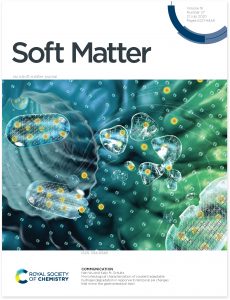 Are you a scientist or university communications officer who needs accurate, stunning journal cover art? In this blog post we’ll consider why you, a scientific researcher, should consider hiring a professional science illustrator to create custom science journal cover art. Read on to learn about some of the challenges getting your results showcased on a journal cover, and how custom graphics representing your science can help.
Are you a scientist or university communications officer who needs accurate, stunning journal cover art? In this blog post we’ll consider why you, a scientific researcher, should consider hiring a professional science illustrator to create custom science journal cover art. Read on to learn about some of the challenges getting your results showcased on a journal cover, and how custom graphics representing your science can help.
As you know, journal publication is the backbone of our academic process. It allows for peer review of a group’s science, and helps maintain high research standards. But more and more so, our cultural emphasis of the image above all else makes it feel like the work that’s rewarded and chosen for cover journals, is the work that is the prettiest. How does that correlate with the value of science?
From a more optimistic perspective, there is so much value in images and their potential to convey complex topics. It is a wonderful thing to communicate science visually. Great science graphics equitably share your discoveries with a broader audience.
But again as a scientist, we come back to the question of what to do when your work doesn’t naturally lend itself to pictures. What to do if you don’t have beautiful microscopy images, or incredible simulations that happen to be perfectly rainbow-colored?
Illustrated Journal Covers Set Your Research Apart – Cover art examples for scientists
The good news is, scientific illustrators are here to help you create compelling art that truly represents your discoveries. A science illustration can capture imaginations, explain your science, and show the broader potential societal impacts. Here are some examples from us here at SayoStudio, that help show the variety of subjects that can be visualized.
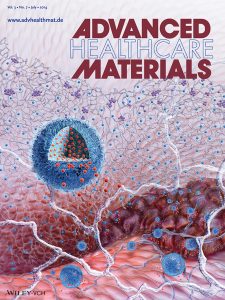
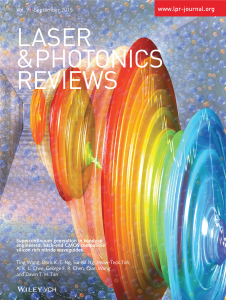

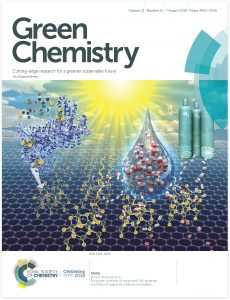
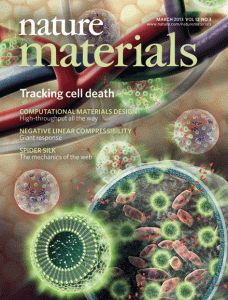

Journal Cover Art Challenges – why your submission might not be chosen
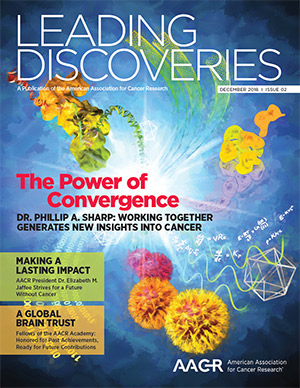 The bad news is, we, as partners communicating your science, have no way of knowing if the art will be chosen for the cover. We wish we could offer guarantees. Regardless of the cover art quality, there are so many factors that the journal is considering that we’re not privy to. Here are some things that the journal may consider that has nothing to do with the value of your science, or the quality of the science art:
The bad news is, we, as partners communicating your science, have no way of knowing if the art will be chosen for the cover. We wish we could offer guarantees. Regardless of the cover art quality, there are so many factors that the journal is considering that we’re not privy to. Here are some things that the journal may consider that has nothing to do with the value of your science, or the quality of the science art:
- Did last month’s cover feature an article from a similar research area?
- Perhaps the image going to press was a completely different subject, but it was someone from your University?
- Or maybe the science is unrelated, but somehow the image is too similar? Similar colors, perspective, etc…?
- Do the editors have a style in mind that we aren’t aware of? For example, they’ve decided to feature photography this month, and not an illustration?
Point being, there are so many unknowns when submitting images for academic journal covers. We wish it were different, and that there were a bit more transparency in the journal publication process. We’d love to work directly with scientific journals’ editors and art directors. Then we could respond to feedback and direction from the journal. Our work with AACR is a great example of this relationship, where we work directly with the journal. This means that the journal can guide us in what they want, and scientists don’t have to bear the extra cost. (hint, hint, nudge, nudge, any other journals out there that want to work directly with us?) Sigh, for now, the reality is that individual scientists (or their press offices) bear the brunt of paying for journal cover art.
So, Why Hire A Science Illustrator for Journal Art?

I KNOW, we should be selling you on our services, but instead we’ve just told you all the reasons you might not be successful getting that journal cover spot. Plus, you’re already paying so much just to get your manuscript published. (See this Nature article, nearly 10 years old, on the cost of scientific journal publication).
But, here is our pitch for why illustration is worth it, even without a guarantee that it ends up on the cover…
Artwork produced by a professional science illustrator has incredible value, beyond the potential cover use. A stunning image will grab people’s attention:
- on social media,
- on your lab’s website,
- in your university alumni magazine,
- distributed in press releases,
- in poster sessions and talks,
- and in your future grant applications.
(but don’t forget to check on the uses your licensing with the artist!)
And in terms of cost, we turn the question back to you. If you’re already investing so much to publish your work, shouldn’t you be sure that you get the most out of it? With accessible science graphics, you fulfill your duty to demonstrate your research’s broader impact (part of the NSF broader impact and NIH impacts grant proposal process). Moreover, you’re helping others understand the significance of your results.
Promote My Work with Art, But I’m a Scientist!?
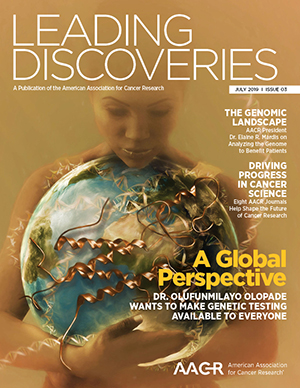 You’ve likely lost your naivety many years ago and learned the cold hard truth of grant applications and funding. What you may not have considered, is how much images can help you gain funding. Not only can a science illustration explain your discoveries, but its novelty can be a jolt of energy. In other words, an excuse for people to pause and consider your work in a new light.
You’ve likely lost your naivety many years ago and learned the cold hard truth of grant applications and funding. What you may not have considered, is how much images can help you gain funding. Not only can a science illustration explain your discoveries, but its novelty can be a jolt of energy. In other words, an excuse for people to pause and consider your work in a new light.
The comic book stereotype of an emotionless scientist (laugh out loud  ), is far from true. After persevering through the heartache and frustration of the scientific process, there is so much joy, relief, and excitement when you finally have concrete results to share. Joy and wonder–that’s something that great science illustration can help capture and reflect to the world.
), is far from true. After persevering through the heartache and frustration of the scientific process, there is so much joy, relief, and excitement when you finally have concrete results to share. Joy and wonder–that’s something that great science illustration can help capture and reflect to the world.
Excitement and hope are contagious, and it’s a fantastic way to draw people. Capturing your enthusiasm graphically acts as an invitation to others so that they can learn about all of your hard work. The more you get your research in front of people, the more you increase their familiarity with your work. In return, they’ll be more receptive to listening to your ideas. You never know who may be grabbed by great graphics: your future all-star graduate student, grant referees, or manuscript reviewers!
Figures and Graphical Abstracts for Scientists
Journal covers are one of the most prominent places to see science illustration and art. But illustrators are also your partners to create clean, inviting figures within the body of journal articles. We know, you have a research assistant or grad student who can create great figures. That’s how many of us at SayoStudio started! Yet, hiring a professional truly sets your work apart, and clarifies your science results. And bonus, a professional illustrator isn’t trying to juggle running a gel or running a statistical model ;-).
Gone are the days that figures are expected to only be simple plots and graphs (not that those aren’t important too!). Even in the small constraints of a journal figure, illustrations can be rich with detail. You’ll notice in our examples published in journals below, that there is a wide variety in subject matter. We cover paleontology to bioengineering, and ecology to biochemistry cell signaling.
Figures published in science journals

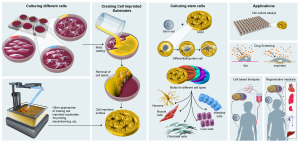
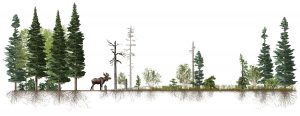

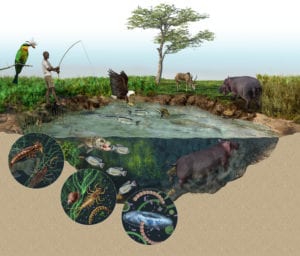
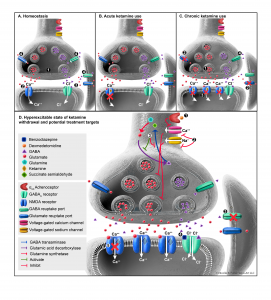
Beyond the Journal cover art… press events, press releases, and alumni magazines
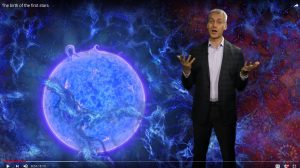 Really, once you open yourself to working professional communicators, the possibilities are endless. We’ve primarily talked about illustrations today, but animations are also instrumental in getting the word out. When your results are worthy of a press event, animation helps boost your reach to news media. Here are a few examples of content that we’ve created for scientists, beyond journal publications:
Really, once you open yourself to working professional communicators, the possibilities are endless. We’ve primarily talked about illustrations today, but animations are also instrumental in getting the word out. When your results are worthy of a press event, animation helps boost your reach to news media. Here are a few examples of content that we’ve created for scientists, beyond journal publications:
- Discovery of first stars and dark matter – astronomy animations for international press events
- New antibiotics science animation and illustrations of engineering for alumni magazines
- ocean ecology art for conservation efforts that raise awareness in the general public
- nanotechnology of a water filter to help explain and promote a free DIY water filter
What Now? More resources for working with science illustrators.
We’re confident that if you consider how valuable custom cover art is, even if it’s NOT chosen for the cover, you won’t be disappointed. And to make sure your partnership with a visual science communicator—our broad term for animators, illustrators, and designers—is as fruitful as possible, here are a couple of resources:
- First, we have some tips on finding a visual science communicator.
- Second, describes the logistical information you can ask and expect to share when you hire a science communicator.
- And we invite you to check out our process here at SayoStudio.
Please let us know in the comments if this was helpful or if you have questions!
If you feel inspired and would like to join the science art conversation, please sign up for our newsletters!
Notice: JavaScript is required for this content. /* FORM STYLES */ #nf-form-9_5-cont .nf-error-field-errors { }
var formDisplay=1;var nfForms=nfForms||[];var form=[];form.id=’9_5′;form.settings={“objectType”:”Form Setting”,”editActive”:true,”title”:”MailChimp Signup (Blog)”,”created_at”:”2020-07-21 02:32:48″,”default_label_pos”:”above”,”show_title”:”0″,”clear_complete”:”1″,”hide_complete”:”1″,”logged_in”:”0″,”wrapper_class”:””,”element_class”:””,”key”:””,”add_submit”:”0″,”currency”:””,”unique_field_error”:”A form with this value has already been submitted.”,”not_logged_in_msg”:””,”sub_limit_msg”:”The form has reached its submission limit.”,”calculations”:[],”formContentData”:[{“formContentData”:[{“order”:1,”cells”:[{“order”:0,”fields”:[“email_1523972427420″],”width”:”100″}]},{“order”:2,”cells”:[{“order”:0,”fields”:[“subscribe_1523977672092″],”width”:”100″}]}],”order”:0,”type”:”part”,”clean”:true,”title”:”Part Title”,”key”:”jvvggbyr”}],”drawerDisabled”:false,”container_styles_show_advanced_css”:”0″,”title_styles_show_advanced_css”:”0″,”row_styles_show_advanced_css”:”0″,”row-odd_styles_show_advanced_css”:”0″,”success-msg_styles_show_advanced_css”:”0″,”error_msg_styles_show_advanced_css”:1,”conditions”:[],”mp_breadcrumb”:”1″,”mp_progress_bar”:”1″,”mp_display_titles”:”0″,”breadcrumb_container_styles_show_advanced_css”:”0″,”breadcrumb_buttons_styles_show_advanced_css”:”0″,”breadcrumb_button_hover_styles_show_advanced_css”:”0″,”breadcrumb_active_button_styles_show_advanced_css”:”0″,”progress_bar_container_styles_show_advanced_css”:”0″,”progress_bar_fill_styles_show_advanced_css”:”0″,”part_titles_styles_show_advanced_css”:”0″,”navigation_container_styles_show_advanced_css”:”0″,”previous_button_styles_show_advanced_css”:”0″,”next_button_styles_show_advanced_css”:”0″,”navigation_hover_styles_show_advanced_css”:”0″,”allow_public_link”:0,”embed_form”:””,”changeEmailErrorMsg”:”Please enter a valid email address!”,”changeDateErrorMsg”:”Please enter a valid date!”,”confirmFieldErrorMsg”:”These fields must match!”,”fieldNumberNumMinError”:”Number Min Error”,”fieldNumberNumMaxError”:”Number Max Error”,”fieldNumberIncrementBy”:”Please increment by “,”formErrorsCorrectErrors”:”Please correct errors before submitting this form.”,”validateRequiredField”:”This is a required field.”,”honeypotHoneypotError”:”Honeypot Error”,”fieldsMarkedRequired”:”Fields marked with an * are required”,”container_styles_border”:””,”container_styles_height”:””,”container_styles_margin”:””,”container_styles_padding”:””,”container_styles_float”:””,”title_styles_border”:””,”title_styles_height”:””,”title_styles_width”:””,”title_styles_font-size”:””,”title_styles_margin”:””,”title_styles_padding”:””,”title_styles_float”:””,”row_styles_border”:””,”row_styles_width”:””,”row_styles_font-size”:””,”row_styles_margin”:””,”row_styles_padding”:””,”row-odd_styles_border”:””,”row-odd_styles_height”:””,”row-odd_styles_width”:””,”row-odd_styles_font-size”:””,”row-odd_styles_margin”:””,”row-odd_styles_padding”:””,”success-msg_styles_border”:””,”success-msg_styles_height”:””,”success-msg_styles_width”:””,”success-msg_styles_font-size”:””,”success-msg_styles_margin”:””,”success-msg_styles_padding”:””,”error_msg_styles_border”:””,”error_msg_styles_width”:””,”error_msg_styles_font-size”:””,”error_msg_styles_margin”:””,”error_msg_styles_padding”:””,”error_msg_styles_advanced”:””,”mp_prev_label”:””,”mp_next_label”:””,”breadcrumb_container_styles_border”:””,”breadcrumb_container_styles_height”:””,”breadcrumb_container_styles_width”:””,”breadcrumb_container_styles_margin”:””,”breadcrumb_container_styles_padding”:””,”breadcrumb_container_styles_float”:””,”breadcrumb_buttons_styles_border”:””,”breadcrumb_buttons_styles_height”:””,”breadcrumb_buttons_styles_width”:””,”breadcrumb_buttons_styles_font-size”:””,”breadcrumb_buttons_styles_margin”:””,”breadcrumb_buttons_styles_padding”:””,”breadcrumb_buttons_styles_float”:””,”breadcrumb_button_hover_styles_border”:””,”breadcrumb_button_hover_styles_height”:””,”breadcrumb_button_hover_styles_width”:””,”breadcrumb_button_hover_styles_font-size”:””,”breadcrumb_button_hover_styles_margin”:””,”breadcrumb_button_hover_styles_padding”:””,”breadcrumb_button_hover_styles_float”:””,”breadcrumb_active_button_styles_border”:””,”breadcrumb_active_button_styles_height”:””,”breadcrumb_active_button_styles_width”:””,”breadcrumb_active_button_styles_font-size”:””,”breadcrumb_active_button_styles_margin”:””,”breadcrumb_active_button_styles_padding”:””,”breadcrumb_active_button_styles_float”:””,”progress_bar_container_styles_border”:””,”progress_bar_container_styles_height”:””,”progress_bar_container_styles_width”:””,”progress_bar_container_styles_margin”:””,”progress_bar_container_styles_padding”:””,”progress_bar_container_styles_float”:””,”progress_bar_fill_styles_border”:””,”progress_bar_fill_styles_height”:””,”progress_bar_fill_styles_margin”:””,”progress_bar_fill_styles_padding”:””,”part_titles_styles_border”:””,”part_titles_styles_height”:””,”part_titles_styles_width”:””,”part_titles_styles_font-size”:””,”part_titles_styles_margin”:””,”part_titles_styles_padding”:””,”part_titles_styles_float”:””,”navigation_container_styles_border”:””,”navigation_container_styles_height”:””,”navigation_container_styles_width”:””,”navigation_container_styles_margin”:””,”navigation_container_styles_padding”:””,”navigation_container_styles_float”:””,”previous_button_styles_border”:””,”previous_button_styles_height”:””,”previous_button_styles_width”:””,”previous_button_styles_font-size”:””,”previous_button_styles_margin”:””,”previous_button_styles_padding”:””,”next_button_styles_border”:””,”next_button_styles_height”:””,”next_button_styles_width”:””,”next_button_styles_font-size”:””,”next_button_styles_margin”:””,”next_button_styles_padding”:””,”navigation_hover_styles_border”:””,”navigation_hover_styles_height”:””,”navigation_hover_styles_width”:””,”navigation_hover_styles_font-size”:””,”navigation_hover_styles_margin”:””,”navigation_hover_styles_padding”:””,”repeatable_fieldsets”:””,”ninjaForms”:”Ninja Forms”,”fieldTextareaRTEInsertLink”:”Insert Link”,”fieldTextareaRTEInsertMedia”:”Insert Media”,”fieldTextareaRTESelectAFile”:”Select a file”,”formHoneypot”:”If you are a human seeing this field, please leave it empty.”,”fileUploadOldCodeFileUploadInProgress”:”File Upload in Progress.”,”fileUploadOldCodeFileUpload”:”FILE UPLOAD”,”currencySymbol”:”$”,”thousands_sep”:”,”,”decimal_point”:”.”,”siteLocale”:”en_US”,”dateFormat”:”m\/d\/Y”,”startOfWeek”:”1″,”of”:”of”,”previousMonth”:”Previous Month”,”nextMonth”:”Next Month”,”months”:[“January”,”February”,”March”,”April”,”May”,”June”,”July”,”August”,”September”,”October”,”November”,”December”],”monthsShort”:[“Jan”,”Feb”,”Mar”,”Apr”,”May”,”Jun”,”Jul”,”Aug”,”Sep”,”Oct”,”Nov”,”Dec”],”weekdays”:[“Sunday”,”Monday”,”Tuesday”,”Wednesday”,”Thursday”,”Friday”,”Saturday”],”weekdaysShort”:[“Sun”,”Mon”,”Tue”,”Wed”,”Thu”,”Fri”,”Sat”],”weekdaysMin”:[“Su”,”Mo”,”Tu”,”We”,”Th”,”Fr”,”Sa”],”currency_symbol”:””,”beforeForm”:””,”beforeFields”:””,”afterFields”:””,”afterForm”:””};form.fields=[{“objectType”:”Field”,”objectDomain”:”fields”,”editActive”:false,”order”:1,”idAttribute”:”id”,”label”:”Email”,”type”:”email”,”key”:”email_1523972427420″,”label_pos”:”hidden”,”required”:1,”default”:””,”placeholder”:”Email Address”,”container_class”:”three-fourths first”,”element_class”:””,”admin_label”:””,”help_text”:””,”custom_name_attribute”:”email”,”drawerDisabled”:false,”field_label”:”Email”,”field_key”:”email_1523972427420″,”personally_identifiable”:1,”wrap_styles_show_advanced_css”:0,”label_styles_show_advanced_css”:0,”element_styles_show_advanced_css”:0,”cellcid”:”c4277″,”value”:””,”wrap_styles_border”:””,”wrap_styles_width”:””,”wrap_styles_margin”:””,”wrap_styles_padding”:””,”wrap_styles_float”:””,”label_styles_border”:””,”label_styles_width”:””,”label_styles_font-size”:””,”label_styles_margin”:””,”label_styles_padding”:””,”label_styles_float”:””,”element_styles_border”:””,”element_styles_width”:””,”element_styles_font-size”:””,”element_styles_margin”:””,”element_styles_padding”:””,”element_styles_float”:””,”id”:”101_5″,”beforeField”:””,”afterField”:””,”parentType”:”email”,”element_templates”:[“email”,”input”],”old_classname”:””,”wrap_template”:”wrap”},{“objectType”:”Field”,”objectDomain”:”fields”,”editActive”:false,”order”:2,”idAttribute”:”id”,”label”:”Subscribe”,”type”:”submit”,”processing_label”:”Processing”,”container_class”:”one-fourth”,”element_class”:””,”key”:”subscribe_1523977672092″,”drawerDisabled”:false,”field_label”:”Subscribe”,”field_key”:”subscribe_1523977672092″,”wrap_styles_show_advanced_css”:0,”element_styles_show_advanced_css”:0,”submit_element_hover_styles_show_advanced_css”:0,”cellcid”:”c4281″,”wrap_styles_border”:””,”wrap_styles_width”:””,”wrap_styles_margin”:””,”wrap_styles_padding”:””,”wrap_styles_float”:””,”element_styles_border”:””,”element_styles_width”:””,”element_styles_font-size”:””,”element_styles_margin”:””,”element_styles_padding”:””,”element_styles_float”:””,”submit_element_hover_styles_border”:””,”submit_element_hover_styles_width”:””,”submit_element_hover_styles_font-size”:””,”submit_element_hover_styles_margin”:””,”submit_element_hover_styles_padding”:””,”submit_element_hover_styles_float”:””,”id”:”102_5″,”beforeField”:””,”afterField”:””,”value”:””,”label_pos”:”above”,”parentType”:”textbox”,”element_templates”:[“submit”,”button”,”input”],”old_classname”:””,”wrap_template”:”wrap-no-label”}];nfForms.push(form);
{{{ data.renderProgressBar() }}} {{{ data.renderBreadcrumbs() }}} {{{ data.renderPartTitle() }}}
{{{ data.title }}}
{{{ data.renderNextPrevious() }}}
The post Science Journal Cover Art – Why Hire an Illustrator? appeared first on SayoStudio.






